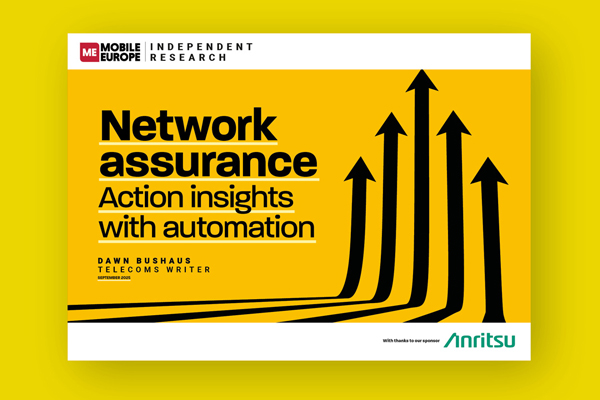Train and tram builder CAF and Cellnex have completed what they claim is one of the world’s earliest validations of a Communications-Based Train Control system running over a private 5G network
CAF’s signalling division and Cellnex Telecom have claimed an international milestone after successfully validating CAF’s Communications-Based Train Control (CBTC) system, OPTIO, on a private 5G network deployed and managed by Cellnex. The companies tested the system both in laboratory conditions and in field trials, confirming that OPTIO operates reliably over 5G – an achievement they claim places the project among the first globally to prove CBTC compatibility with private 5G infrastructure.
CAF (Construcciones y Auxiliar de Ferrocarriles) is a Spain-based transport systems supplier with more than 17,000 employees and operations across Europe, the Americas and Asia-Pacific. The group manufactures trains, trams, high-speed rolling stock, locomotives and buses, and provides signalling, electrification and turnkey transport systems. Its signalling division has expanded in recent years, culminating in the introduction of OPTIO, its modern CBTC system.
The company unveiled OPTIO in December 2024, completing its portfolio of signalling solutions. Designed to support dense urban mobility, OPTIO provides real-time train control, automatic driving capabilities and compliance with IEEE1474 and IEC62290 standards. CAF said at the time that the system could reduce energy consumption by more than 20% and had already been demonstrated in Europe and Latin America.
The new validation with Cellnex confirms that OPTIO can operate over multiple wireless technologies – Wi-Fi, LTE and now private 5G – broadening its deployment options for both new lines and upgrades.
CAF describes OPTIO as modular and scalable, supporting improvements in operational reliability, punctuality and capacity. The shift to 5G introduces what the companies characterise as a major architecture change, enabling higher throughput and lower latency while giving railway operators full control of the network.
Deterministic environment
Compared with Wi-Fi or LTE, the partners say private 5G offers a more deterministic environment suited to safety-critical applications, including tunnels and areas where interference is difficult to manage. They argue this can help simplify infrastructure and reduce long-term operational costs for asset owners.
“OPTIO’s validation on a private 5G network confirms the technological versatility of the system, which positions us at the forefront of the digital transformation of the railway sector,” said CAF signalling division general manager Jon Alzate.
Cellnex Spain CEO Alfonso Álvarez said: “The fundamental objective of the project has been to promote R&D to integrate ultra-low latency and high-capacity 5G connectivity in critical railway systems, including tunnels, thus improving the safety, efficiency and reliability of operations and preparing the infrastructure for the challenges of future smart mobility.”
The validation was supported by European co-funding through the Recovery and Resilience Facility (RRF) under Spain’s UNICO Sectorial 2023 programme (Project TSI-065200-2023-006).
CAF and Cellnex have not announced when commercial deployments might begin, but the results mark a definite step towards integrating private 5G into operational railway signalling systems.
The announcement signals [geddit?] that the rail signalling industry is moving from concept toward pilot/validation of CBTC over private 5G. As a result, Metro and urban networks upgrading to CBTC may increasingly consider private 5G as the communications layer. At the same time, national and EU research projects (e.g. 5GRAIL) will influence how FRMCS and 5G integrate into rail signalling.
For main-line rail (intercity/high-speed) the shift may come slower, but urban/suburban networks, where capacity, automation and digital services matter most, are likely to be the early adopters.




